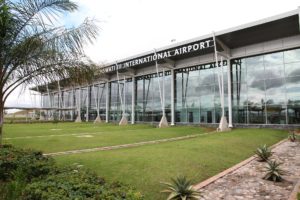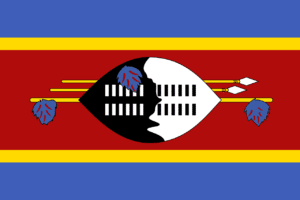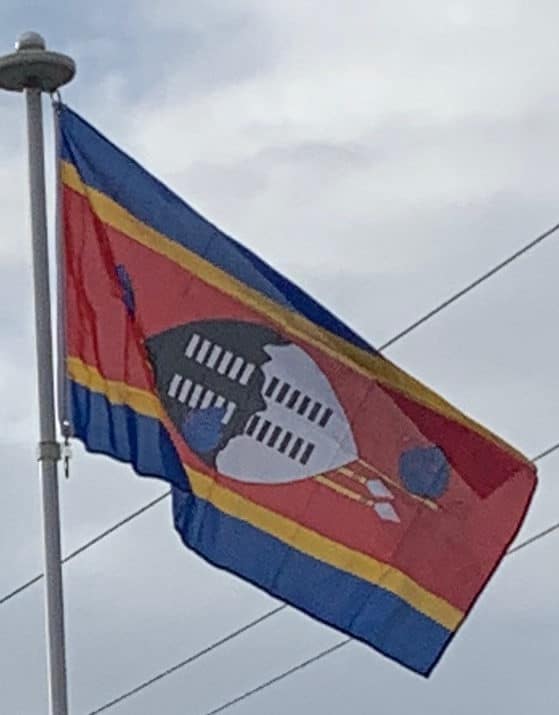There is a 301 kilometer railway in Eswatini that is used strictly for freight movement, especially for exporting products through Mozambiquan ports of Matola and Maputo.
The country’s main airport is King Mswati International Airport, which has a 3,600m runway.

The other paved airport is Matsapha Airport.
Flag of Eswatini:
The flag of Eswatini was adopted on October 6, 1968 after Eswatini (then Swaziland) gained independence from the British Empire on September 6, 1968.
The flag is based on the military flag given by King Sobhuza II to the Swazi Pioneer Corps in 1941 to remind them of the nation’s military traditions. On 25 April 1967, the day the pledge of oath was taken by the king, the flag was hoisted for the first time. The College of Arms in London registered the flag on 30 October 1967. The first official hoisting of the flag was conducted on this day.

The red stands for past battles, the blue for peace and stability, and the yellow for the resources of Eswatini. The central focus of the flag is a Nguni shield and two spears, symbolizing protection from the country’s enemies. Its colour is meant to show that white and black people live in peaceful coexistence in Eswatini. The flag has five horizontal stripes—two blue stripes at the top and bottom while the center stripe is red. Two thin yellow stripes border the red stripe. On the red stripe is an ox hide combat shield from the traditional Swazi Emasotsha Regiment, laid horizontally. The shield is reinforced by a staff from which hangs injobo tassels-bunches of feathers of the widowbird and the lourie. They also decorate the shield. These feathers are used only by the king. Above the staff are two assegais-local spears, a Swazi fighting stick and three royal Swazi ornamental tassels called tinjobo, which are made from widow bird and loury feathers.
